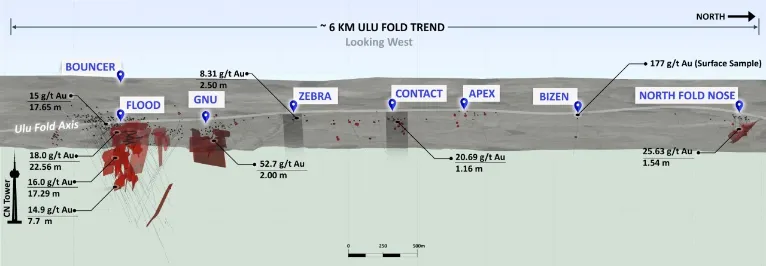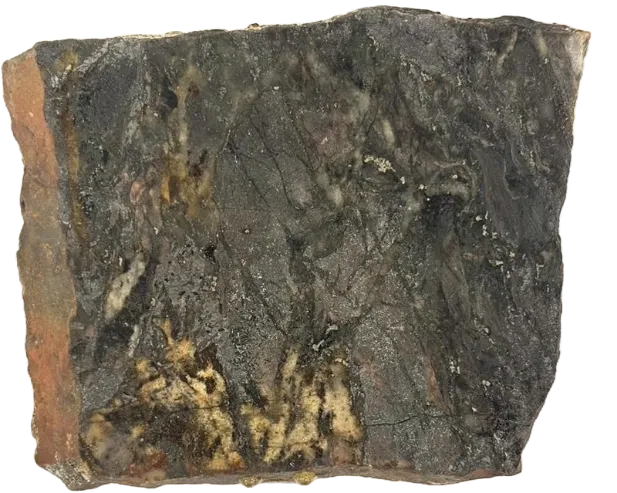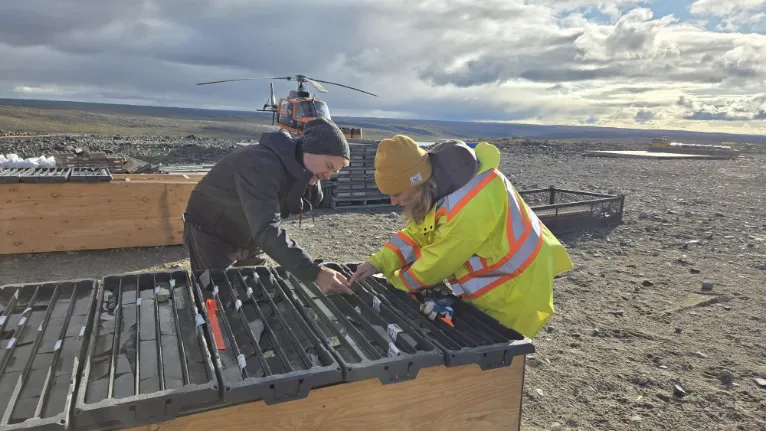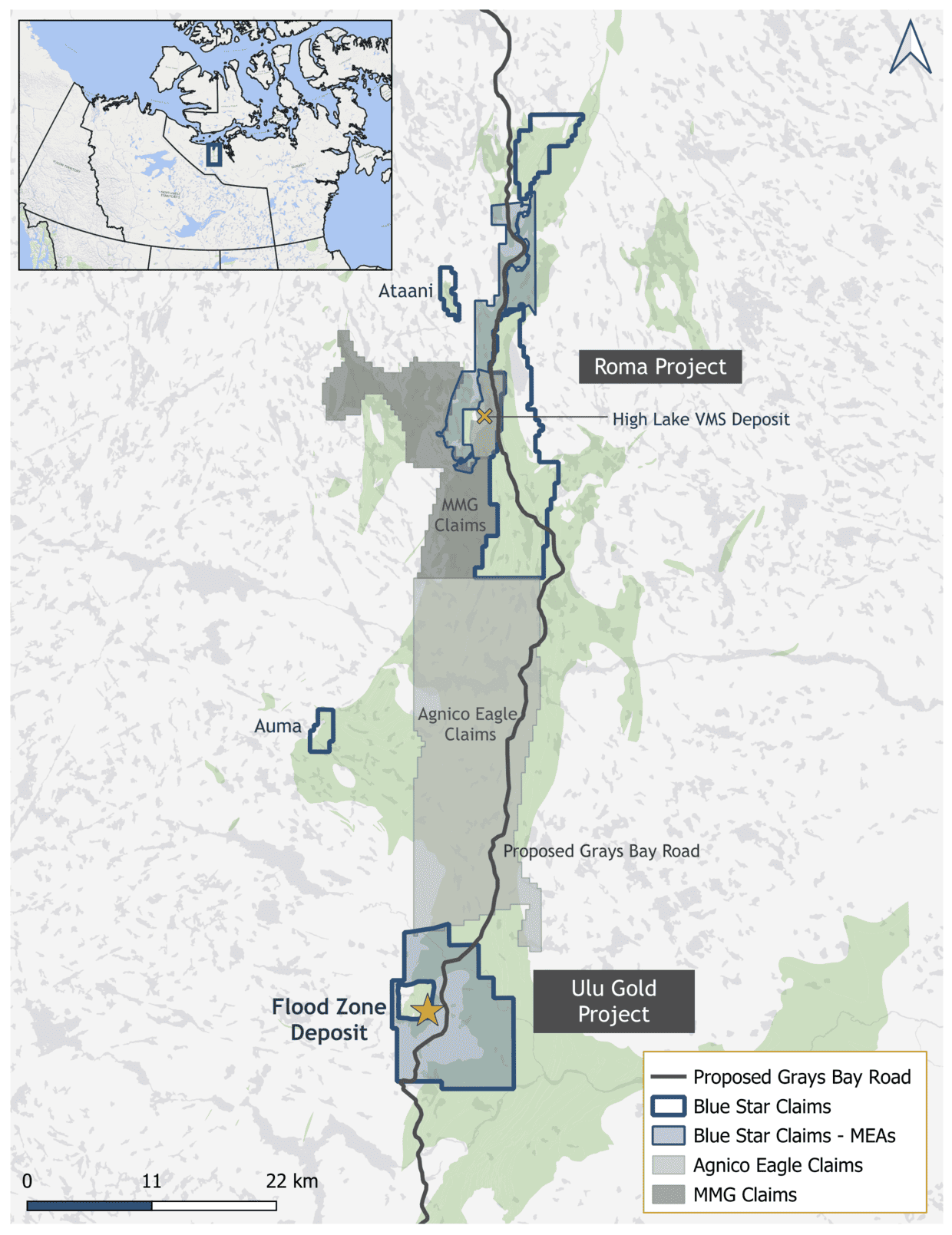Ulu-Hood River
Ulu-Hood River Project Overview
Blue Star’s Ulu-Hood River Project encompasses ~12,000 hectares and hosts the advanced stage Flood Zone gold deposit, where a significant high-grade gold resource has been outlined. Permanent infrastructure at the site includes a camp, a network of roads, an airstrip, and an underground decline into the Flood Zone gold deposit. Numerous high potential exploration target areas occur throughout the project, providing Blue Star with excellent resource growth potential.
Flood Zone Gold Deposit
- Shear hosted anastomosing vein/alteration system within the Ulu Fold
- Amphibolite grade
- Gold is associated with acicular arsenopyrite within silicified brecciated high iron tholeiitic metabasalt, proximal to metasediment contact
- Open on-strike and at depth
- 1.7km of underground development
- Metallurgical testing has shown that gold is recoverable in amounts greater than 90% by gravity, flotation and cyanidation
- The deepest intersection of potentially mineable width is 14.9 g/t Au over 7.7 m at 610 m below surface


Nutaaq
- High grade polymetallic quartz veins hosted in gabbro and acicular arsenopyrite within silicified gabbro
- Multiple untested targets defined by surface grab samples, soil sampling and EM conductors
North Fold Nose
- Acicular arsenopyrite in silicified rock and quartz veins at the metabasalt-metasediment contact in the Ulu Fold hinge
- Not tested to depth
Ulu Gold Project Mineral Resource Estimate:
M&I 572,000 oz. Au (2.53MT @ 7.02 g/t Au)
Inf. 303,000 oz. Au (1.28MT @ 7.34 g/t Au)

Peripheral Targets
A large number of high-grade gold showings occur throughout the Ulu-Hood River project area which provide excellent resource expansion potential. The main exploration target for the property is shear-hosted gold mineralization similar to the Flood Zone deposit. There is also strong potential to discover massive sulphide vein systems as evidenced by a 2021 discovery ~750 meters northeast of the Flood Zone deposit.
The series of gold showings and prospects that occur on trend and north of the Flood Zone deposit are considered to be related to the ~5 kilometer long Ulu Fold which hosts the Flood Zone and extends to the North Fold Nose. Over 20 gold prospects have been identified to date on this key structural feature.

Exploration History
- High Lake deposit is discovered by Kennarctic Exploration
- 1967-1970 Borealis Exploration completes reconnaissance traverses on the Hood River property for base metal exploration
- 1984 BHP stakes the Grumpy claim to protect a large auriferous arsenopyrite-rich quartz vein, the first reported gold showing in the High Lake Greenstone Belt
- 1985 Aber Resources prospects and drills the Hood River property
- 1988 BHP stakes the Ulu claim and surrounding areas after collecting a 1.2 g/t gold grab sample
- 1989 BHP discovers and drills the Flood Zone after collecting a series of >20 g/t gold grab samples over a 400m trend
- 1990-1993 BHP drills the Flood Zone and drill tests outboard gold showings peripheral to the Flood Zone, including the North Fold Nose
- 1993 Benachee/Snowpipe Resources stake the Hood River claims to explore for diamond potential
- 1995 Echo Bay purchases the Ulu project and generates a resource and mine plan to a 300 m depth at a rate of 750 t/d for seven years
- 1996 Echo Bay installs a camp at Ulu, a ramp to the 75 m level and builds an interim winter road between Lupin and Ulu, completes infill surface drilling on the Flood Zone and drills peripheral targets
- 1997 Echo Bay extends the ramp to the 155 m level and begins underground drilling at the Flood Zone alongside exploration drilling. Drillign and underground operations were suspended and a new resource estimate, feasibility study and new mine plan were produced.
- 2000 Tahera Diamonds acquires the Hood River MEA and discovers the Tenacity Kimberlite
- 2004 Wolfden acquires the Ulu Mining Lease and drills 44 holes, primarily at the Flood Zone
- 2005 Wolfden commissions a NI43-101 report on the Flood Zone
- 2006 Wolfden commissions a preliminary economic assessment of the Ulu property
- 2011 Elgin drills 13 holes at the Flood Zone and peripheral targets
- 2013 Inukshuk signs the current Hood River MEA exploration agreement with Nunavut Tunngavik Incorporated
- 2014 WPC acquires the Hood River MEA and conducts a surface sampling program
- 2018 The Ulu property is transferred to WPC and a channel sampling program is completed
- 2019 WPC changes its name to Blue Star Gold Corp to reflect major changes to its management team and Board of Directors and represent the Company’s dedication to Canada’s North. A drill program is conducted on the North Fold Nose
- 2020 Blue Star drills at the Flood Zone, Nutaaq and North Fold Nose, and several peripheral targets
- 2021 Blue Star drills at the Flood Zone, Nutaaq and North Fold Nose, as well as several peripheral targets.
- 2022 Blue Star drills at the Flood Zone, Nutaaq and North Fold Nose, and several peripheral targets. An airborne geophysical survey is completed over all Blue Star claims.
- 2023 Blue Star completes a surface program with an extensive mapping component, and releases an updated NI43-101 technical report
- 2024 Blue Star drills at the Flood Zone, Nutaaq and several peripheral targets


